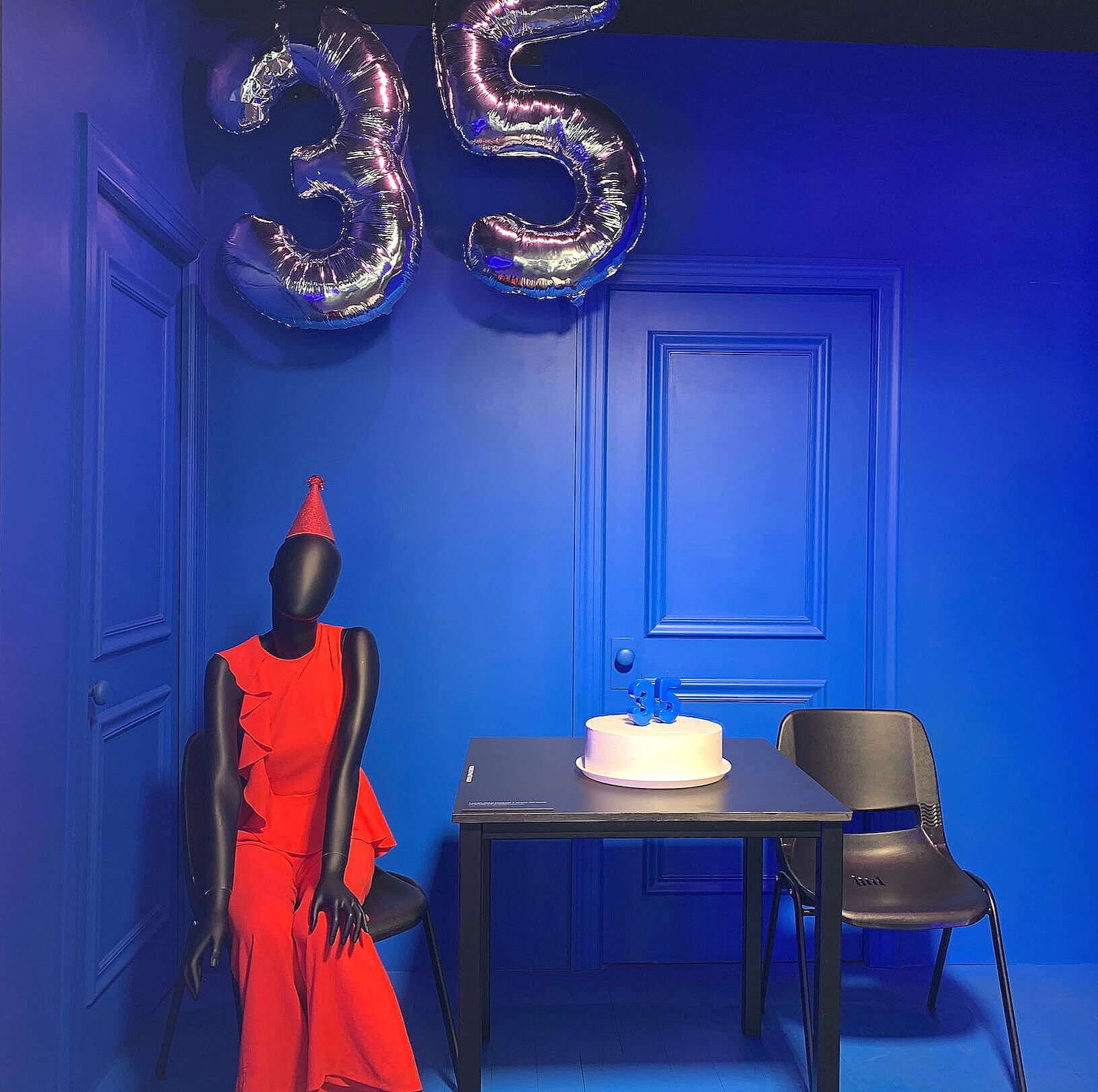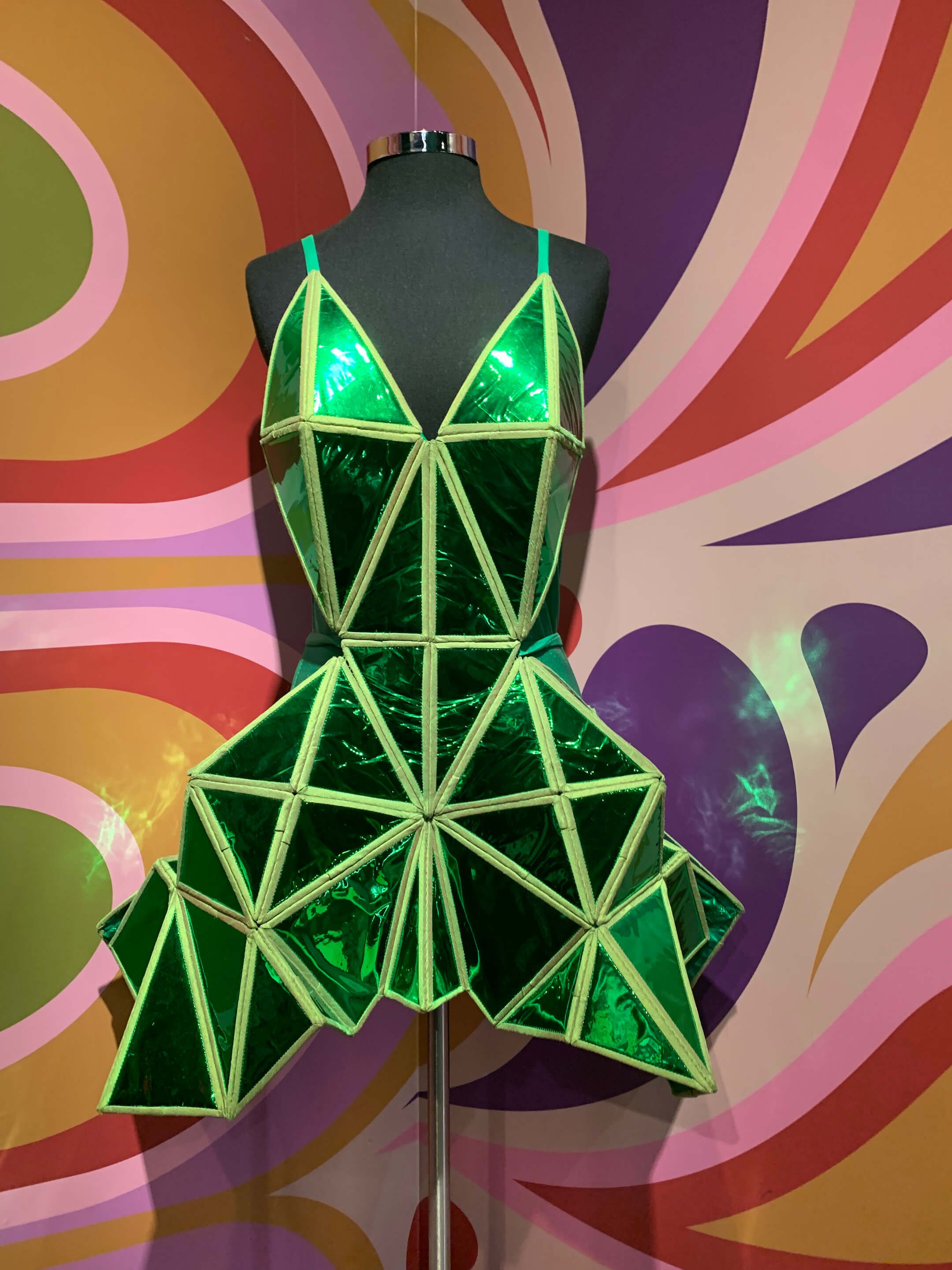The Museum of Broadway
Growing up around Washington DC, I was fortunate to be able to see world class museums whenever I wanted. History, science, art, it was all there. But a museum for the arts? A museum full of nothing but Broadway history and gorgeous costumes and the behind-the-scenes tidbits I love to learn about? That can only be found in one place.
I had the amazing opportunity to visit the Museum of Broadway in New York City, and I can say with confidence it is a theater-lover’s dream.
The museum’s main entrance is through the gift shop (of course), and I had to stop myself from taking the time to pour over every book and examine every show souvenir before I had even entered the exhibits. Even the stairs down to the bathroom ooze theater geek charm and are lined with Playbill covers of Broadway’s past and present. Did I take far too long going downstairs and accidentally annoy the people behind me? No comment.
The beginning of the tour is led by a tour guide, and according to ours, most of them are aspiring actors, auditioning around the city between shifts. As guests wait to be allowed into the first exhibit, there is a holding stairwell lined with photos of Broadway stars. There is no shortage of things to look at or interesting facts to read, and I was honestly a bit disappointed we were not in the stairwell longer.
The first exhibit is a list of all of the productions currently running on Broadway, alongside their descriptions and theater. As an aside, this actually proved to be not only well designed but very helpful. My mother came to New York with me, and this room helped her decide which show she wanted to get day-of tickets for (we went with Shucked, which I cannot recommend enough).
Following a brief video on the history of Broadway, the tour guides release the group to wander the museum on their own, which follows the history of theater and Broadway through its many eras, broken up by approximately 10 years per exhibit.
One of the first displays is the Ziegfeld Follies exhibit. Full of pink fur, bright lights, and all the bedazzling one would expect from such a display, the Ziegfeld room kicks off the history of Broadway with relics and photographs of time gone by.
According to the tour guide stationed by the costumes, the costumes in the exhibit are over 100 years old and were actually worn by Follies. They are currently owned by Disney, after they were found in a dressing room in the New Amsterdam Theatre in the 1990s (Disney has a 99 year lease for the theater). The costumes are on loan, and representatives from Disney come in a few times a month to inspect them, according to the employee.
“It looks like the Secret Service when Disney comes in here,” she joked.
The museum continues to follow through the decades and what many consider the Golden Age of Broadway. Photographs, Playbills, and posters for shows like West Side Story, My Fair Lady, and Showboat adorn the walls. I must say though. For as many posters that they have with Julie Andrews’ name on them, there are no photos of her anywhere in the museum (at least, none that my mom or I were able to find). Very disappointing.




Next up is the second half of the 1960s and the 1970s, this time with exhibits on musicals like Cabaret, The Wiz, Company, and Annie. It also marks the time period of several jukebox musicals, with many of the current musicals focusing on musicians from the 1970s, 80s, and 90s.







But the next part of the museum was by far my favorite, as it is devoted almost entirely to the works of Andrew Lloyd Webber and the late great Stephen Sondheim.
It was at this point that I got emotional. I turned the corner, and staring back at me was the museum’s crown jewel. The Phantom of the Opera exhibit. See for yourself.
Costumes from The Phantom of the Opera: Carlotta (left), the Phantom Red Death costume (middle), Christine (left); designed by Maria Björnson
The Phantom of the Opera chandelier mask
Full disclosure, I cried looking at these. I went to the final public performance of The Phantom of the Opera later that night, and to see the costumes up close before the show felt like I had been let in on a secret. The costumes are full of detailed patterns and exquisite beading one would never be able to see from the audience, and I was incredibly moved by the attention to detail that was clearly lovingly put into these pieces of history.
As museum goers turned the corner into the Phantom exhibit, the gasps were audible. People stopped in their tracks when they saw that red costume, and the word “overwhelming” was used by several people around me. And it was. It really was. Knowing that soon these costumes would be the last physical pieces of this historic show left on display for the foreseeable future (at least, in New York) felt like a moment to be respected.
Next to the costumes hangs a crystal display that at first, simply seems like a pretty chandelier and a delicate homage to one of the most iconic Act I finales in theater history. But an X marked on the floor reveals another perspective.
According to the tour guide stationed in the room, the display contains 13,917 crystals, or the number of performances The Phantom of the Opera will have played on Broadway from its opening night to its original closing date in February. More crystals are slated to be added now that the show has closed to represent the performances from February to its closing date earlier this month.
Post Phantom, we start to enter the modern age of musicals (or their most recent revivals).




Besides the Phantom exhibit, the prop room was by far the coolest. Props from famous shows from the last decade (ish) were on display and can be seen in the gallery below.












Part of this modern era display was a full scale model of my personal favorite, Wicked. With intricate details on all four sides, the model shows not only what happens on the stage, but off, with an inside look at the crew, dressers, and everyone else that works to bring the magic of Oz to the stage every night. Did I freak out just a little bit? Maybe.
Wicked model; designed by Edward Pierce
Rounding out this modern display was a snapshot of the last 20 years. Under each year is a photograph and caption of each show that opened that year, and I spent way too long reading every single one. I probably had too much fun going through and seeing which celebrities made an appearance, like Daniel Radcliff (How to Succeed in Business Without Really Trying), and seeing photographs of shows that can now really only be seen as a student performance (not currently touring or on Broadway), like Legally Blonde, Mary Poppins, and Anything Goes.
Part of the display that highlights every musical that has opened on Broadway since 2000
Of course, no chunk of the timeline would be complete without at least one gorgeous costume on display. Thankfully, this exhibit has 15, including costumes from four shows currently running on Broadway, including Anne Boleyn from SIX, Hades from Hadestown, Professor McGonagall from Harry Potter and the Cursed Child, and Satine from Moulin Rouge! The Musical.
Two costumes and pair of boots worn in Hamilton; designed by Paul Tazewell
The final part of the museum focused on everything that happens off stage and brings a Broadway show to life, from the early stages of writing to the costume design to the lights and sound to building the set. Going through the museum, I was a bit disappointed that there was very little about these talented individuals that work tirelessly to bring theater to life every night. As I entered this exhibit, I was glad to see that their hard work was finally acknowledged in such an authentic way. I worked backstage for several productions in high school, and I can attest that the exhibit was set up to mirror backstage, complete with a woodshop, mini light and sound booth, and of course the ever present, ever hopeful ghostlight.









The Museum of Broadway is unlike anything else out there. It’s full of the nostalgia and love that makes theater special while still being entertaining and engaging and modern. It is beautifully designed, and it is obvious that Broadway’s heart and soul are encapsulated in the lovingly crafted exhibits.
We spent just under three hours in the museum, and we still didn’t read every word. If you are not one that reads everything in a museum (I didn’t think I was, until I realized how long we had been there), it may not take nearly as long. But whether you are there for the written history, the costumes, or something else entirely, there is something for everyone, and I don’t say that lightly.
Even just walking from exhibit to exhibit is part of the experience. Instrumental music plays over the speakers in each era or major exhibit, and it became almost like a game to see whether my mother or I could guess the song and the show it’s from the fastest. As you stroll through the corn fields of Oklahoma! humming along to “Oh What A Beautiful Morning,” you catch the distant, snappy rhythm of “Cool” from West Side Story in the next room, creating an immersive experience that made the Theater Kid in all of us giddy with excitement. Watching people’s faces as they recognize the music and sing along became a huge part of the overall experience.
Yes, we all looked like the stereotype of over-caffeinated theater kids in high school at 7:30 am, but that’s what made this museum so fun. It's an opportunity to indulge and get excited about this thing that helps bring so many people together. To see it all in one place was an incredible feeling. And if you’re a history lover like me, it’s even cooler when you get to see Sondheim’s original notes and rough drafts of his sheet music.
The Museum of Broadway is located at 145 W 45th St, New York, NY 10036 and is wheelchair accessible. Hours vary based on the time of year, so check the website for the most accurate information. Tickets can be purchased here.



















